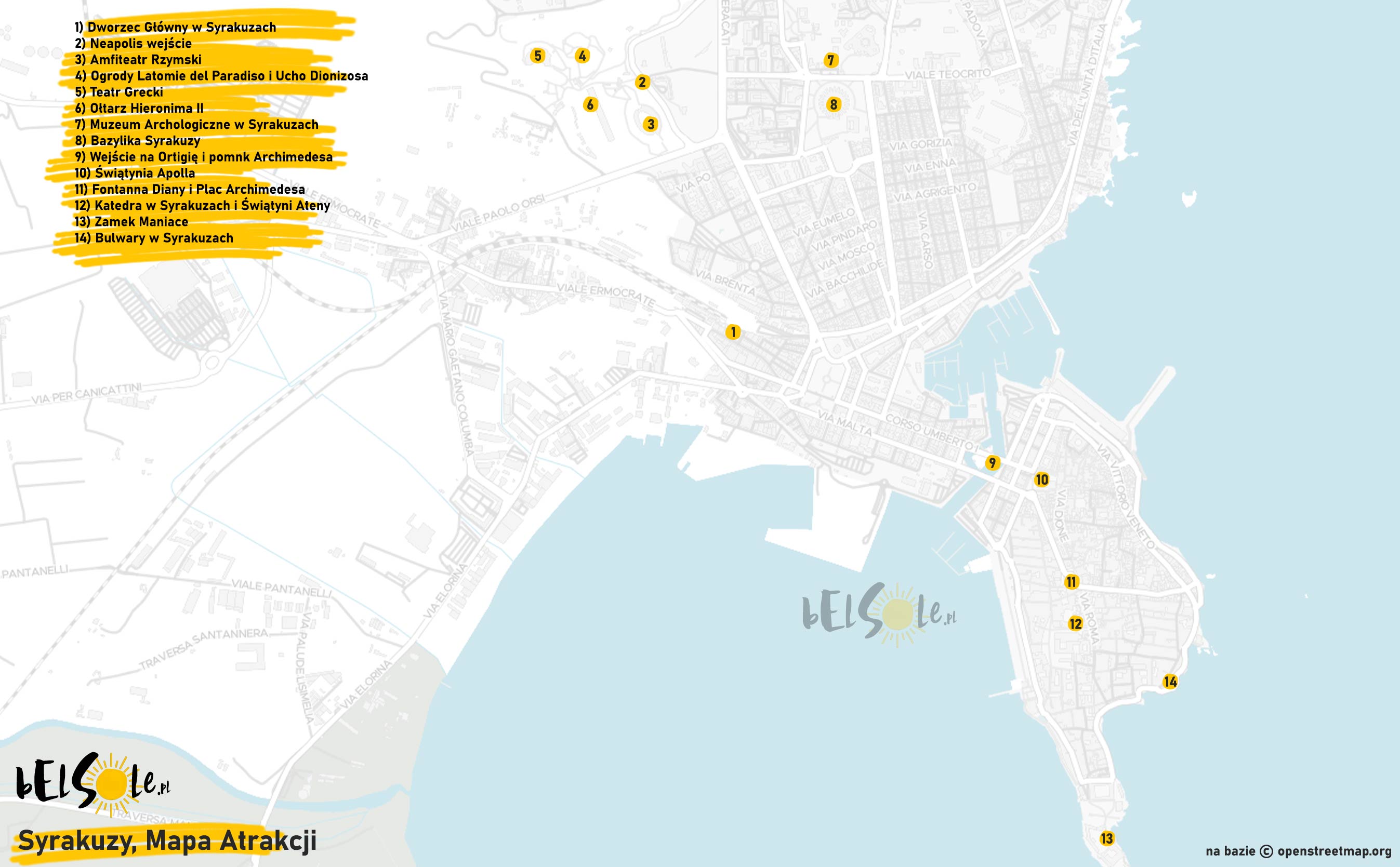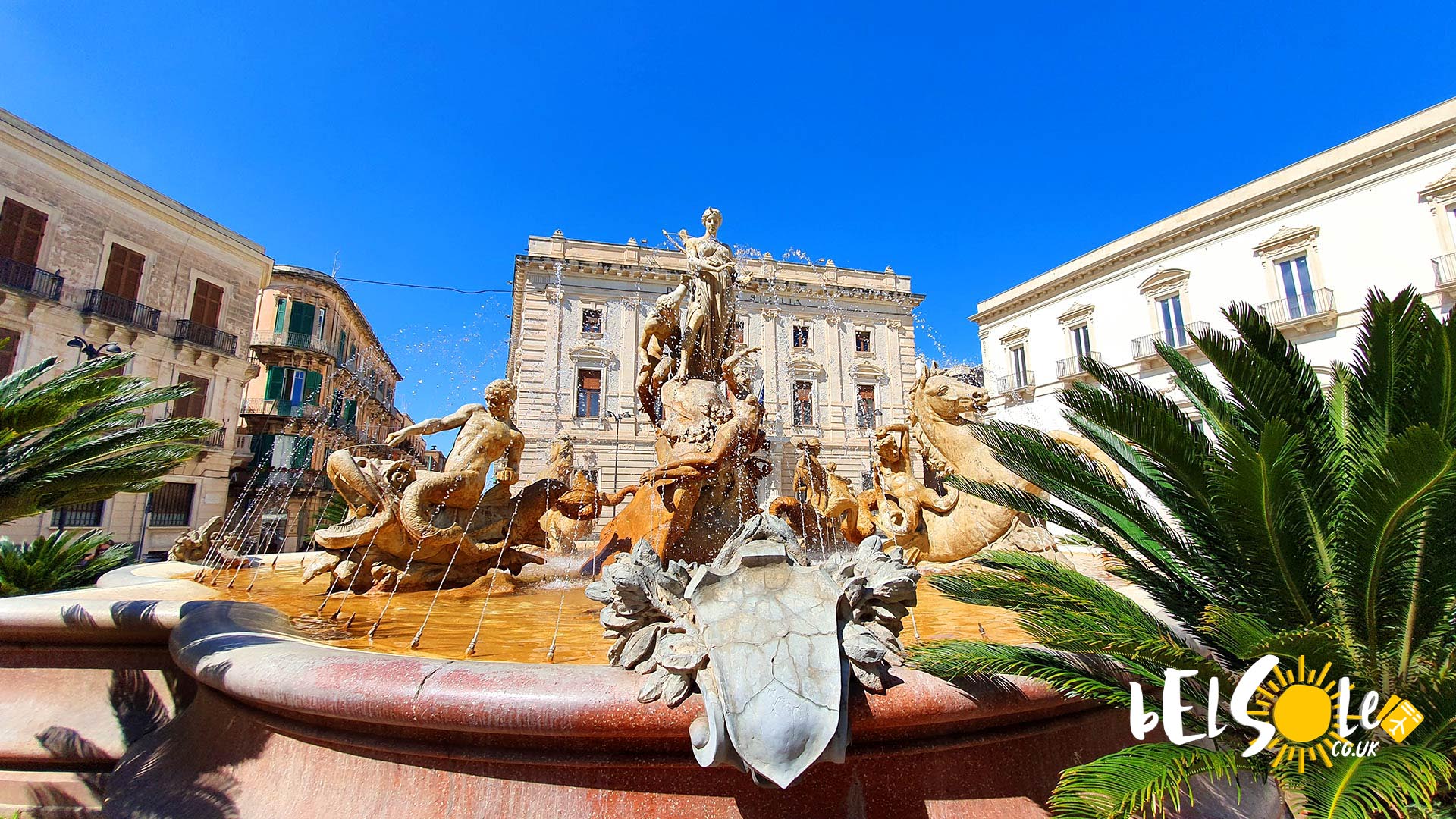The Sicilian Syracuse is full of monuments and attractions – a true gem for the history and art lovers. When going to Syracuse, what attractions should you visit? Which monuments are worth seeing? Is one day enough to check out everything Syracuse has to offer? All the answers regarding the City of Archimedes below.
Syracuse is a historic town located close to Catania (which we’ve also touched upon here). Whether you’re planning a one day trip, or one for the entire weekend, Syracuse is going to serve you well. We recommend combining that trip to the south of Sicily with seeing Taormina and Mount Etna.
Castello Maniace
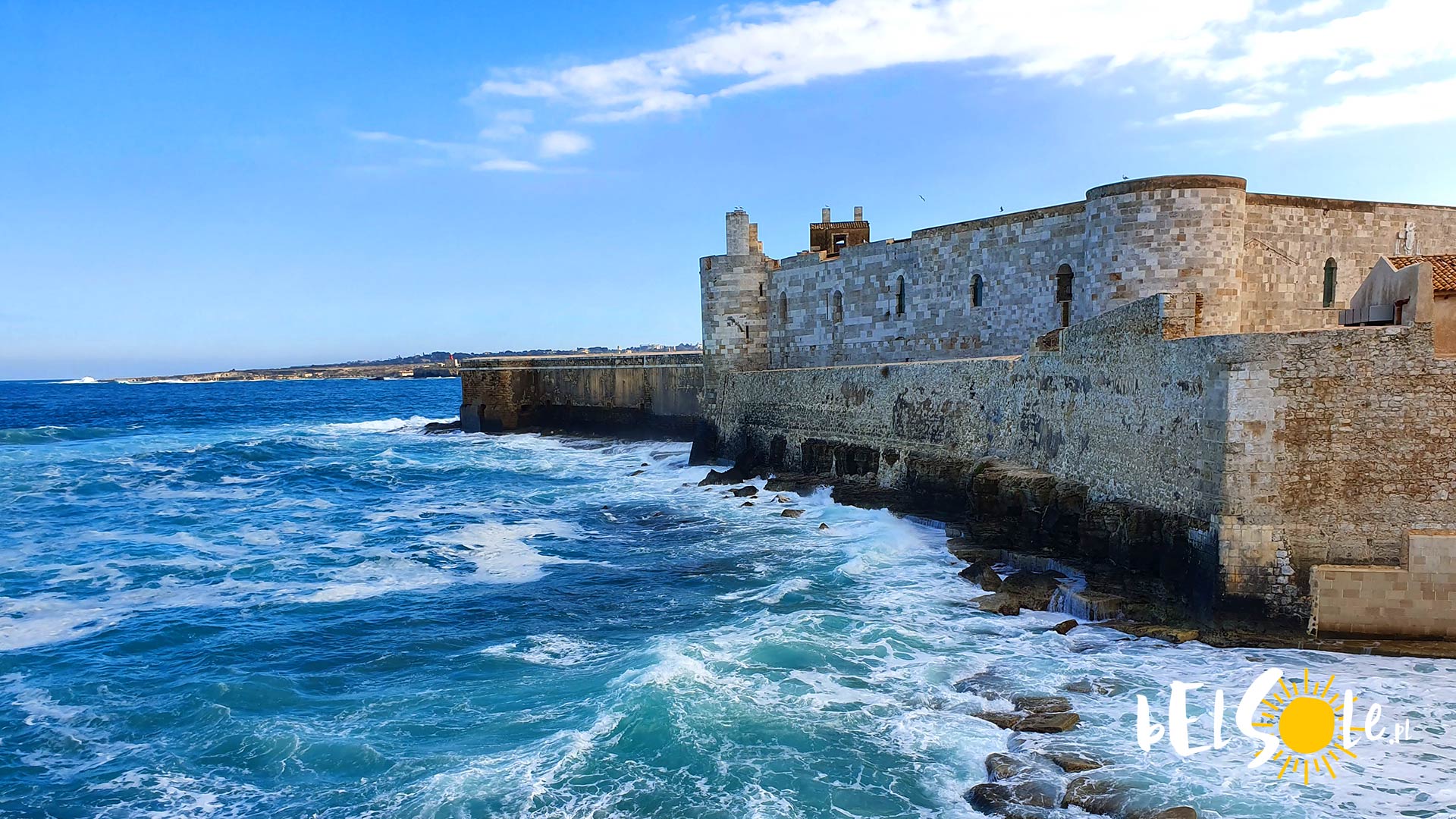
A true citadel, located at the end of the island – which you can access by going through the entire Old Town. Built in 1232, by the Emperor Frederick II. Prior to the Emperor’s doing, this place was occupied by a fortress built by George Maniakes, famous Eastern Roman general, who defeated the Arabs, and took back Syracuse.
The Syracuse Cathedral and the Temple of Athena
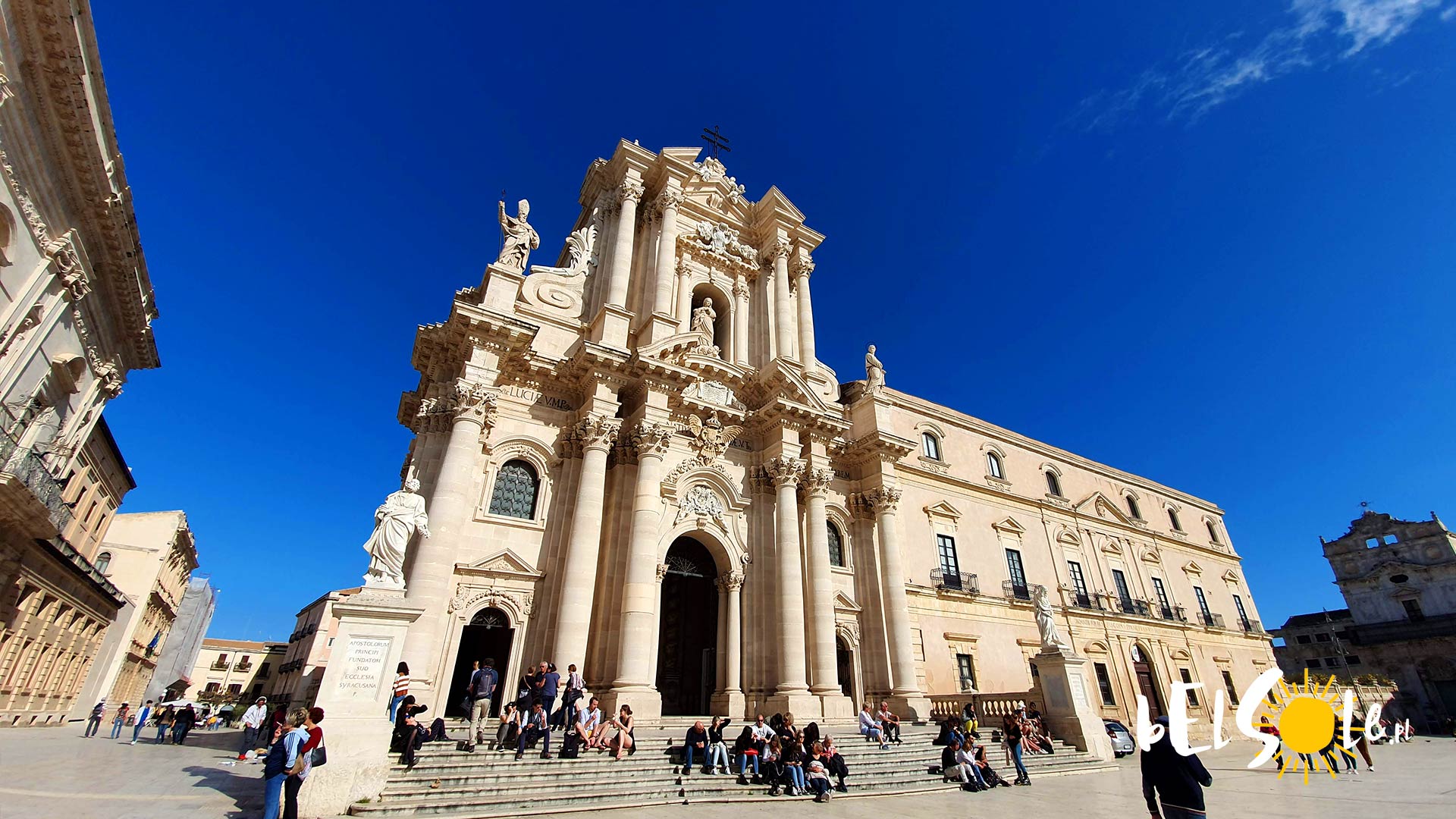
The Cathedral was built by the Byzantines in the 7th century, on the place which was occupied by the Temple of Athena, built in the 5th century BC. You can still spot some leftover columns or foundations present in the walls of the Cathedral. You can take a closer look at these elements in Piazza Minerva. The cathedral is open from 9:00 to 17:30 during the winter season (October – March), in April and September it’s open from 9:00 to 18:30, and for the rest of the year it’s 9:00 to 19:00. The ticket costs 2 EUR, for a concession ticket you only have to pay 1 EUR. What’s intriguing, the archeological studies have shown that there have been more unidentified temples, prior to the Temple of Athena.
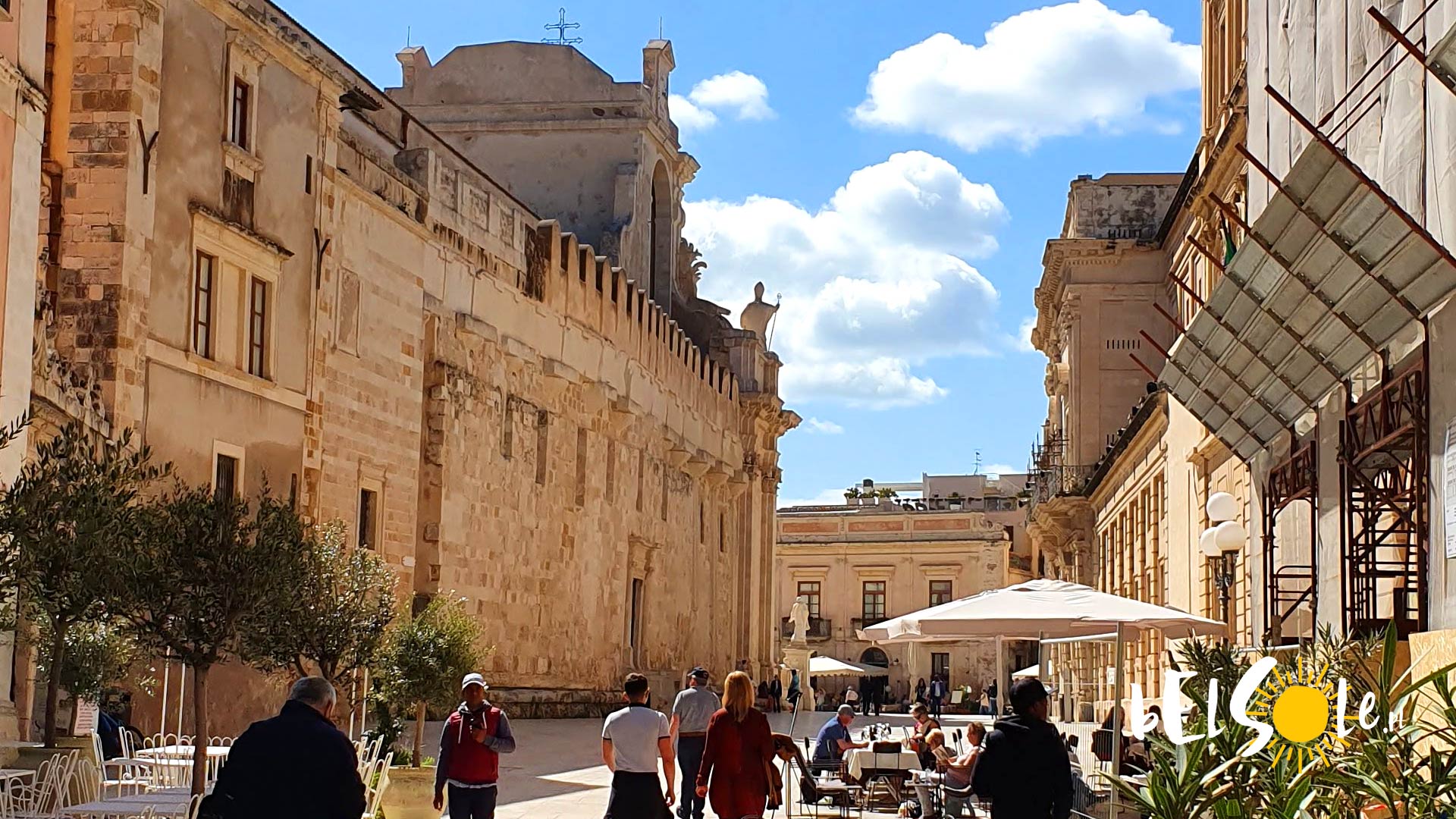
The Cathedral uses a triple nave structure. Inside, you’ll find mosaics from the Norman period, baptismal fonts from the Greek period, and in the main nave, above the altar, there’s a painting presenting the Nativity of Mary.
The Fountain of Diana and the Archimede Square

What else should you see in Syracuse? The square named after the famed inhabitant of Syracuse is located in the center of Ortigia. In the middle of the center, is the Fountain of Diana, built in 1907, designed by Giulio Moschetti. Diana was the Goddess of the hunt, her figure holds a bow and a quiver. The sculpture is dynamic and full of details – needless to say, we were impressed.
The Syracuse Boulevard
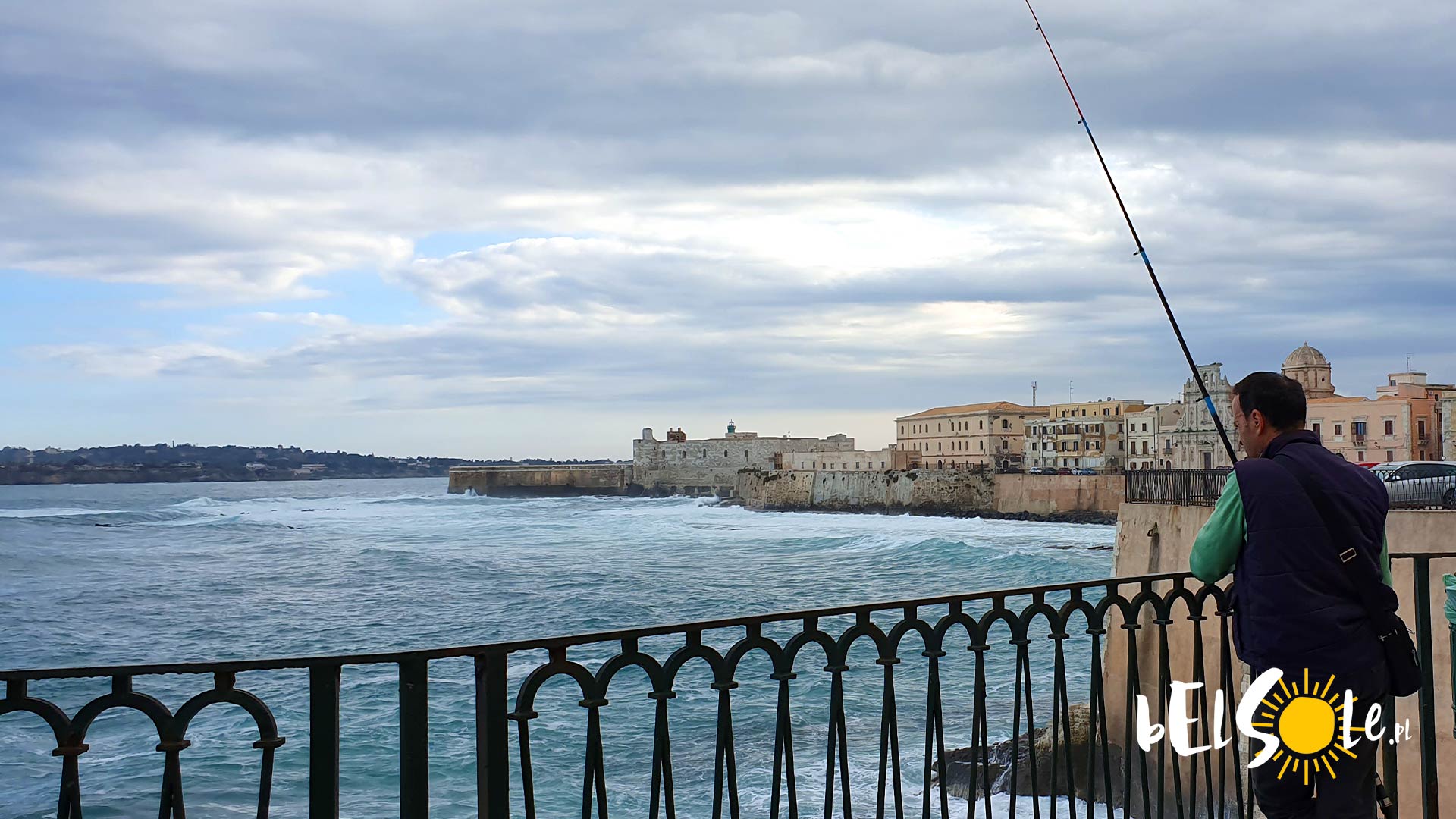
The Boulevards practically surround the entirety of Ortigia (where Syracuse was founded in the Greek times). While wandering around the city, you can admire the beautiful panorama of Syracuse and the sea. It’s worth visiting Fonte Aretusa on the western side of the island and Forte Vigliena on the eastern side. A good place for taking photos is the parking lot by the Via Serafino Privitera and the courtyard of Castello Maniace.
The Archeological Museum in Syracuse
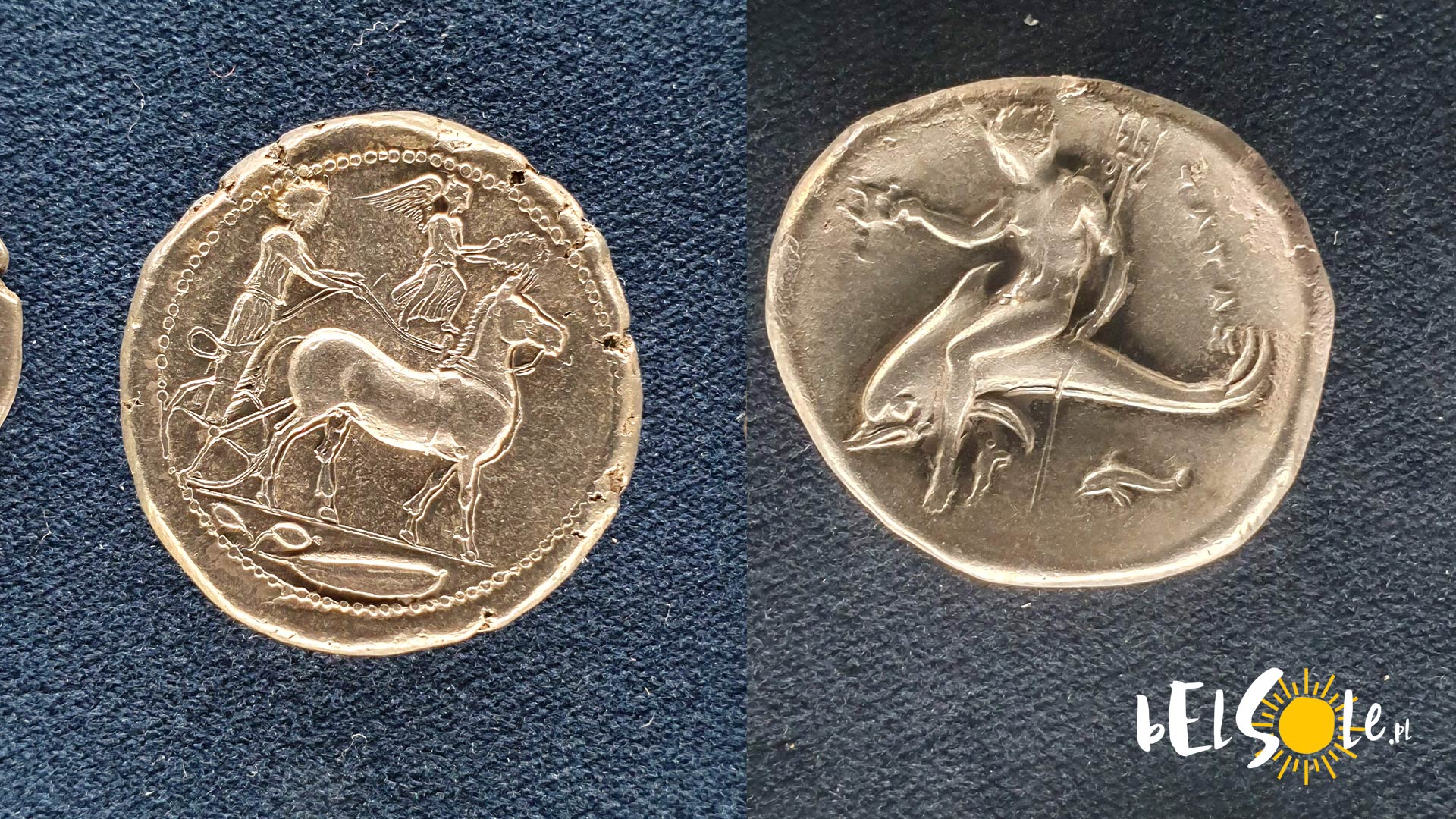
This modern museum will give you shelter from the scorching sun and tell you the story of the Mediterranean Sea and the Syracuse itself, through its gigantic collection of exhibits from all ages, from the Neolithic Era to Early Christianity. The building is fairly new, built in 1988. It’s one of the biggest archeological museums in all of Europe, when it comes to the sheer amount of exhibits.
Sanctuary of Madonna delle Lacrime (Our Lady of Tears)
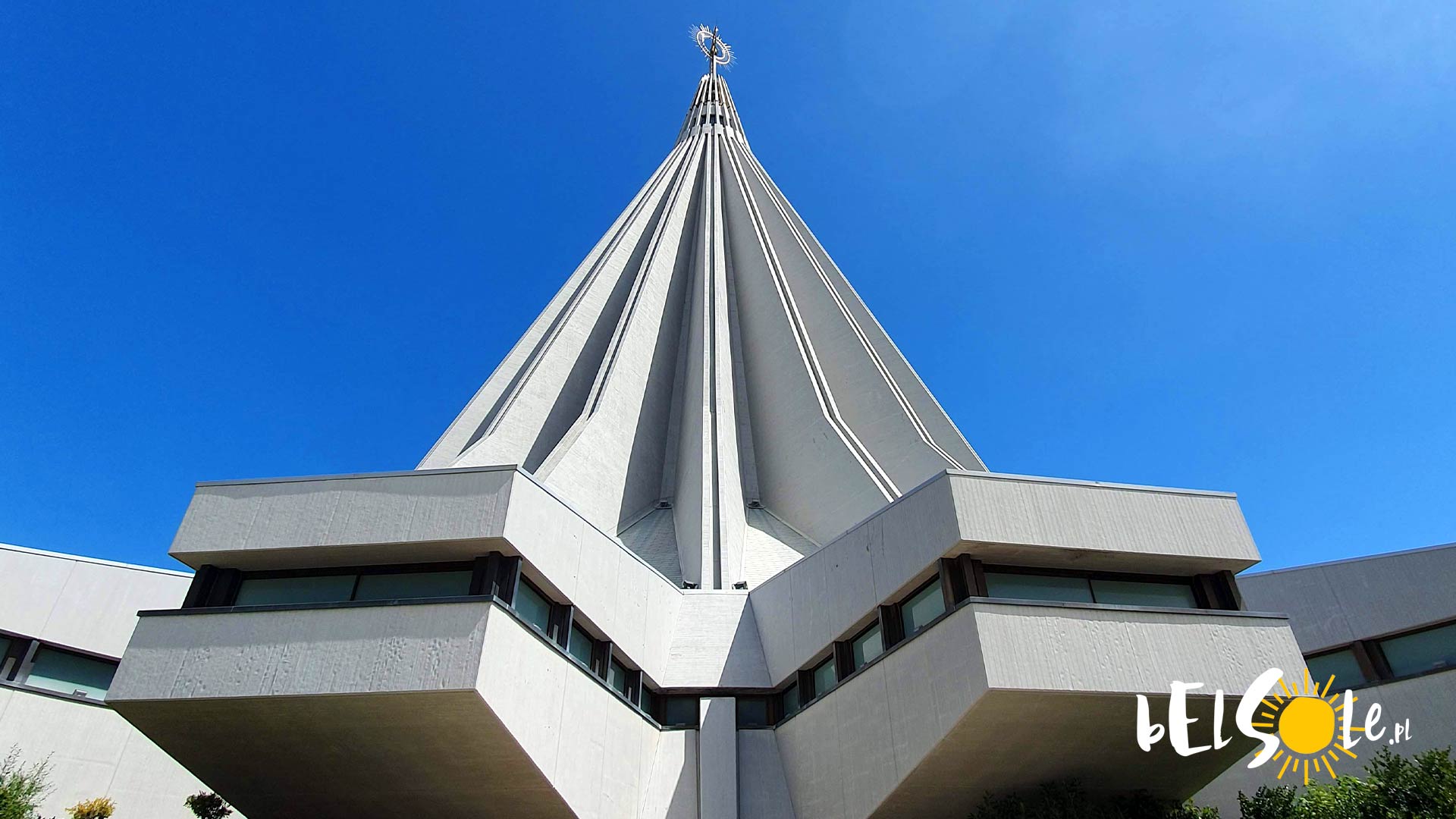
Probably the most controversial point on this list, a temple finished in 1994, holding a status of a minor basilica is sure to be quite eye catching, thanks to its modern design and look. The Sanctuary of Madonna delle Lacrime was designed by Michel Andrault and Pierre Parat. A true gem for the modern architecture lovers, with its spiky top overlooking the new part of Syracuse.
The Temple of Apollo in Syracuse
Upon entering the Ortigia Island, we’re instantly greeted by the oldest Doric temple in Sicily. Because all that’s left is individual parts of the prior construction, it’s difficult to properly pinpoint what we’re looking at. It’s located by the Pancali square, we can go around it and take a closer look at the remains of this 55m long and 21m wide temple. The roof of the Temple of Apollo was held up by 42 gigantic columns, and inside were the Adyton, Pronaos and Naos, the main rooms of the building. The Temple was built in the 6th century BC.
Neapoli, the biggest attraction of Syracuse?
The Archaeological Park of the Neapolis in Syracuse is where we can encounter many monuments from the Greek and Roman periods. Here, you’ll find the Roman Amphitheatre, Latomia del Paradiso, the Ear of Dionysius, the Greek Theatre and many others. The standard ticket costs 10 EUR, the concession ticket costs 5 EUR. Be careful when out of season, since the open hours are quite limited, and it often closes down around 12:00.
The Greek Theatre of Syracuse
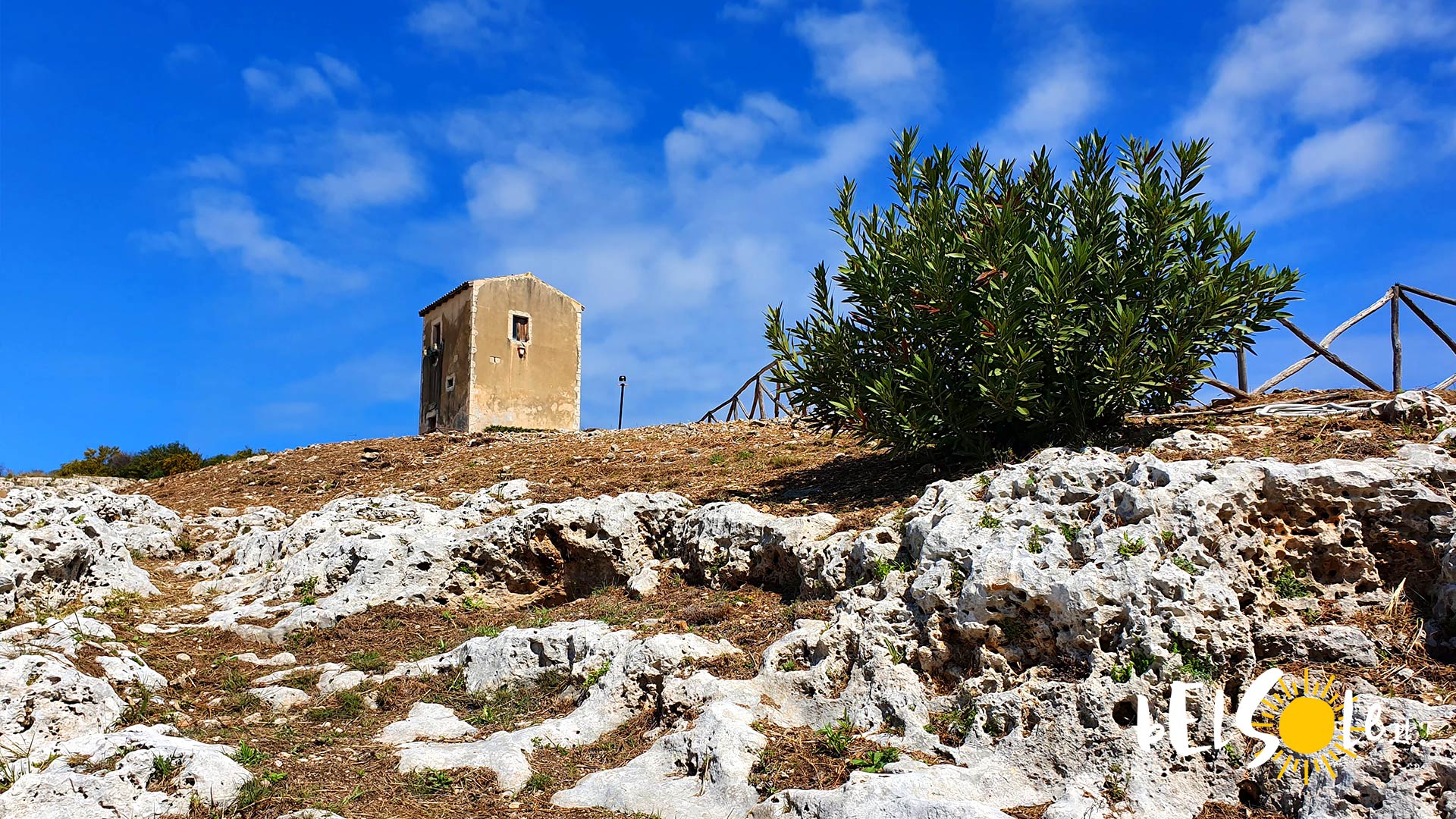
It’s located in the Neapolis area, and it’s probably the most famous building in all of Syracuse. It was originally built in the 5th century BC, only to be expanded 200 years later, to the size we can admire today (with small adjustments from the Romans). It’s one of the biggest Greek theatres in the world – it’s diameter is almost 140m long. The stage has, unfortunately, been almost entirely destroyed. Above the stone chairs (that make up the auditorium) is a gigantic terrace, that ends with a cave, connected to the nearby aqueduct.
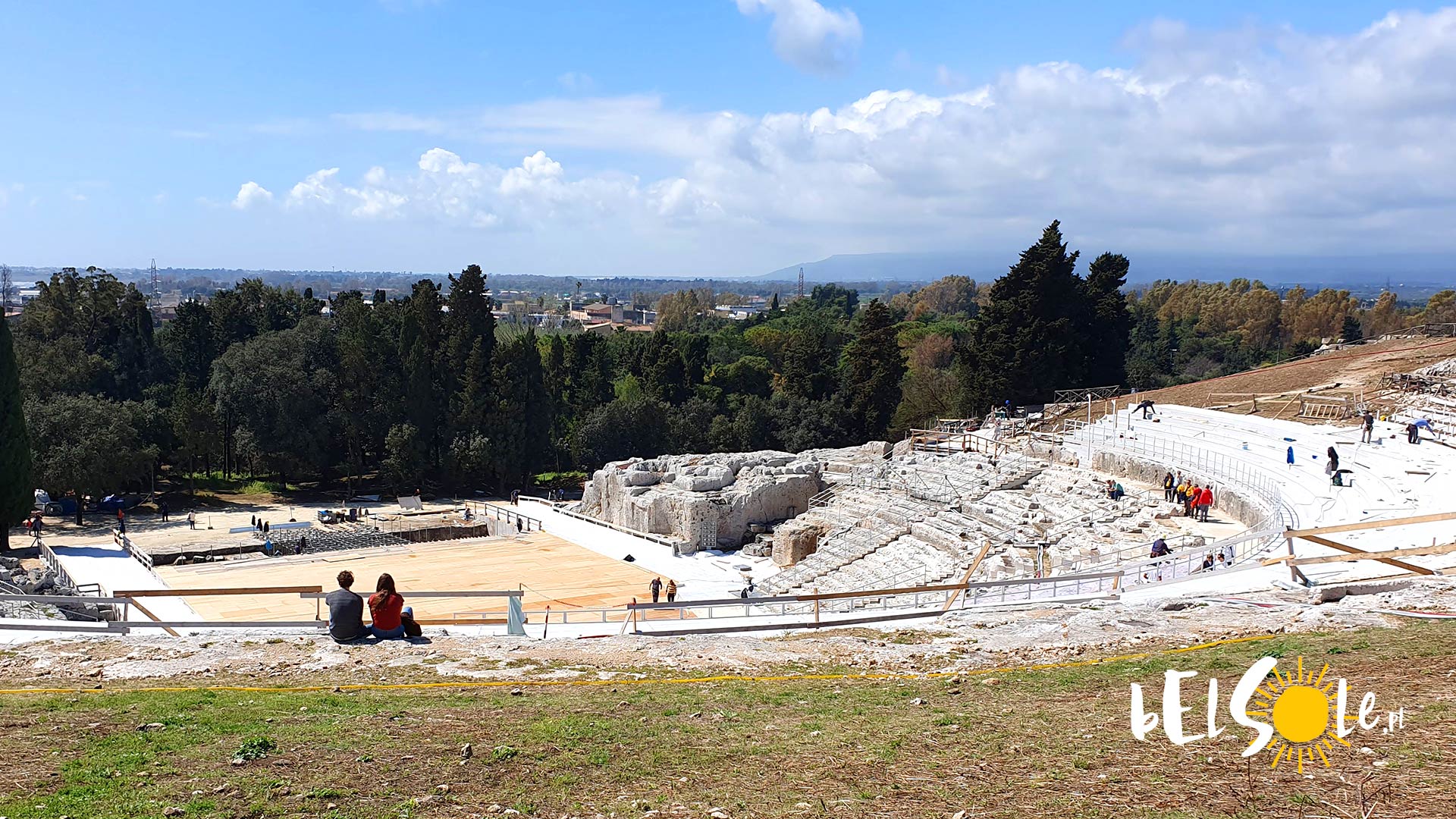
The shape has changed slightly during the period of the Roman rule, from a horseshoe to a semicircular form. Additionally, the passages and the stage itself were rebuilt by Neratius Palmatus. For over 1400 years, the theatre was gradually eroding, some of its fragments were used to build fortifications in Syracuse. In our humble opinion, the monument is somewhat overpriced, our recommendation would be Segesta on the western side of Sicily.
The Ear of Dionysius
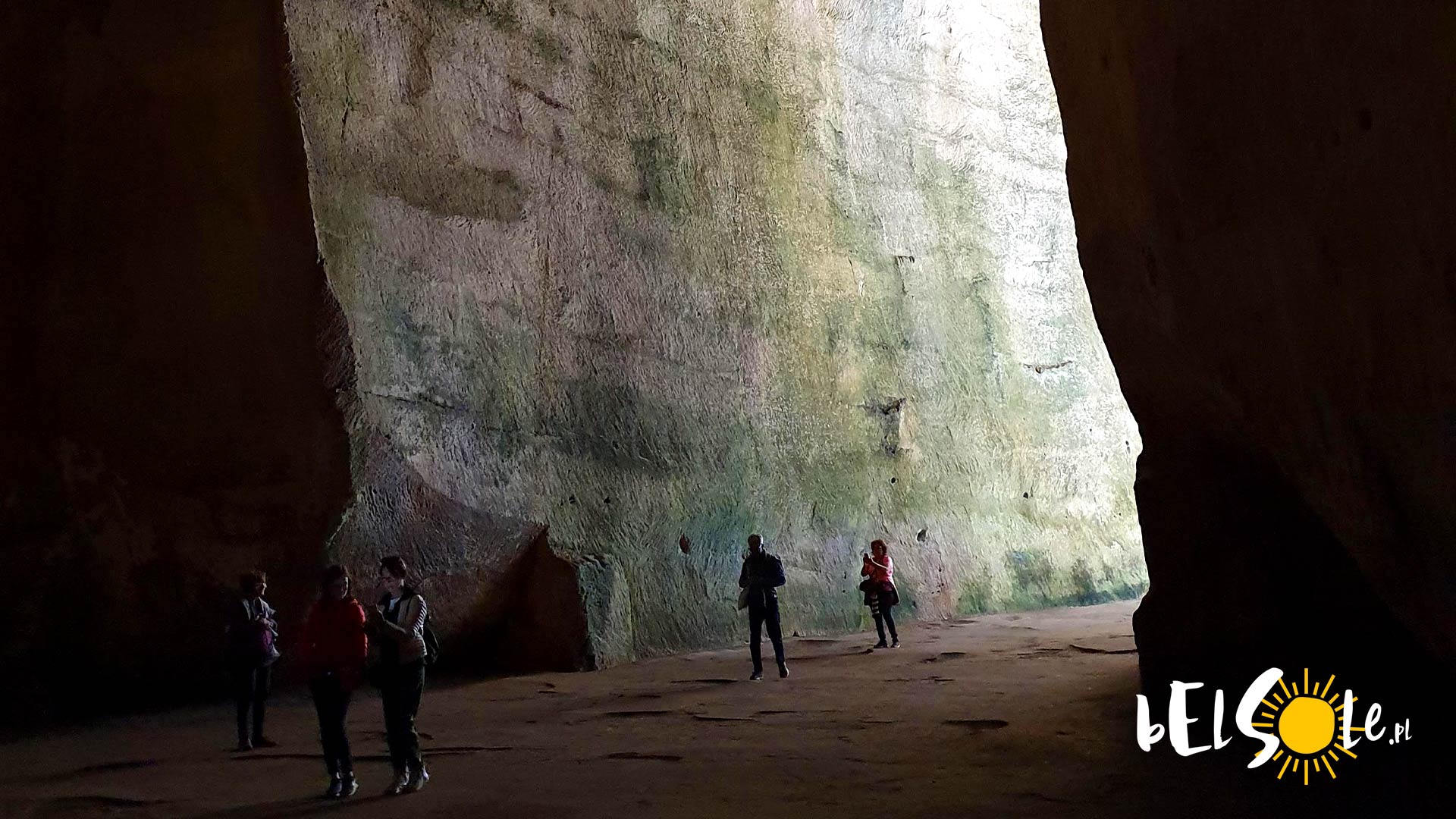
This artificially created cave in limestone rock is located in the Neapolis area. It probably came to be through extraction of the building materials present there, to build the nearby constructions. The name ‘Ear of Dionysius’, was given to this place by Caravaggio, firstly because of the visual resemblance, secondly, because the acoustic effects inside the cave, where the echo could bounce up to 16 times. The Ear of Dionysius is 70 m deep and 65 m long.
The Roman Amphitheatre of Syracuse
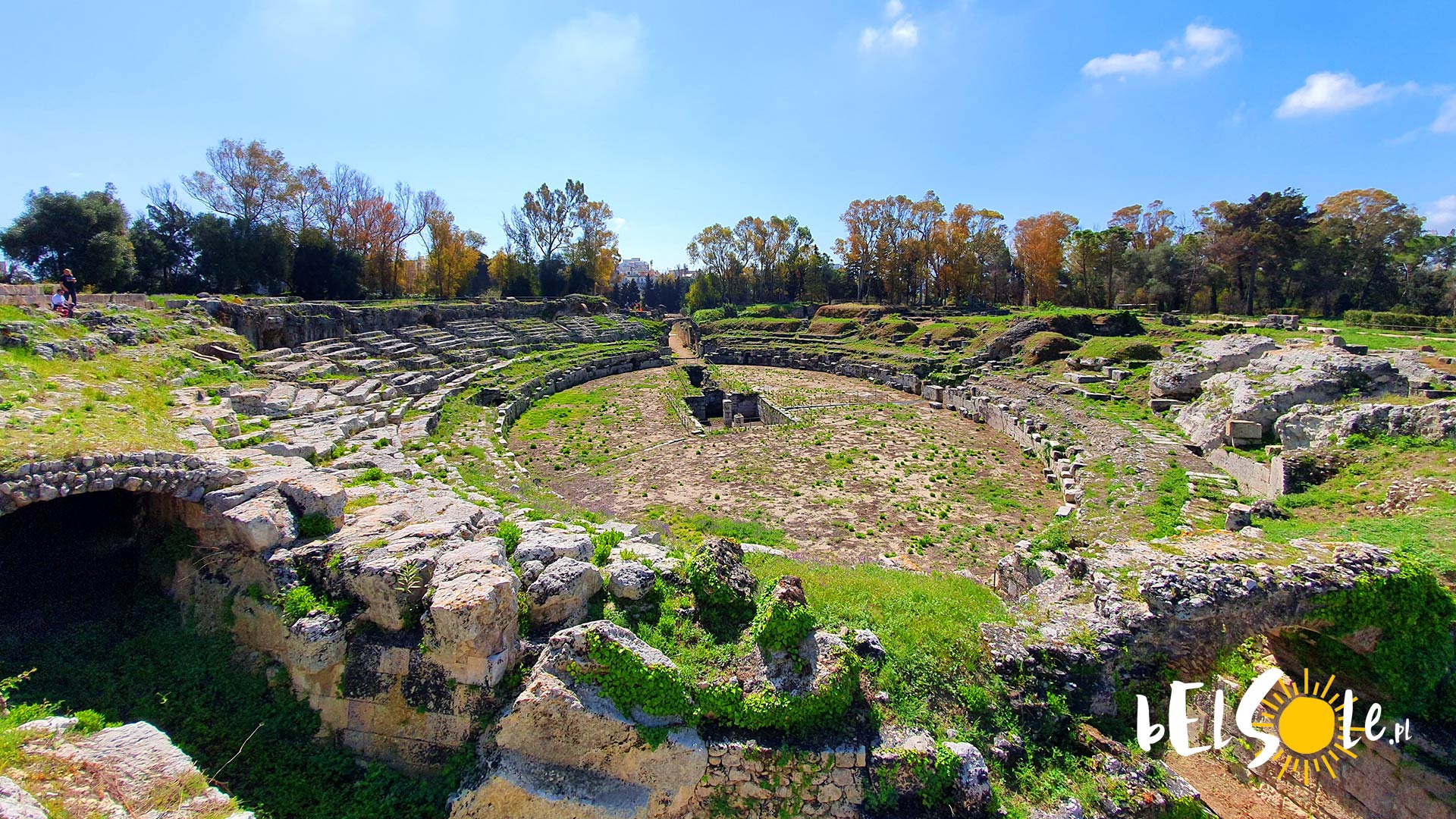
Located in the Neapolis area, its size measures up to approximately 140 m x 119 m – it’s one of the best preserved buildings in the Archaeological Park. It was discovered in 1839, by Domenico Lo Faso Pietrasanta. The Amphitheatre consists of an arena, the auditorium, some cellars and many underground passages. The entrance was marked by a triumphal arch, and the building itself had its own supply of water. Unfortunately, none of the higher levels survived, as most of them were utilized to build fortifications around the place. It’s one of the most interesting attractions of Syracuse.
Latomie del Paradiso
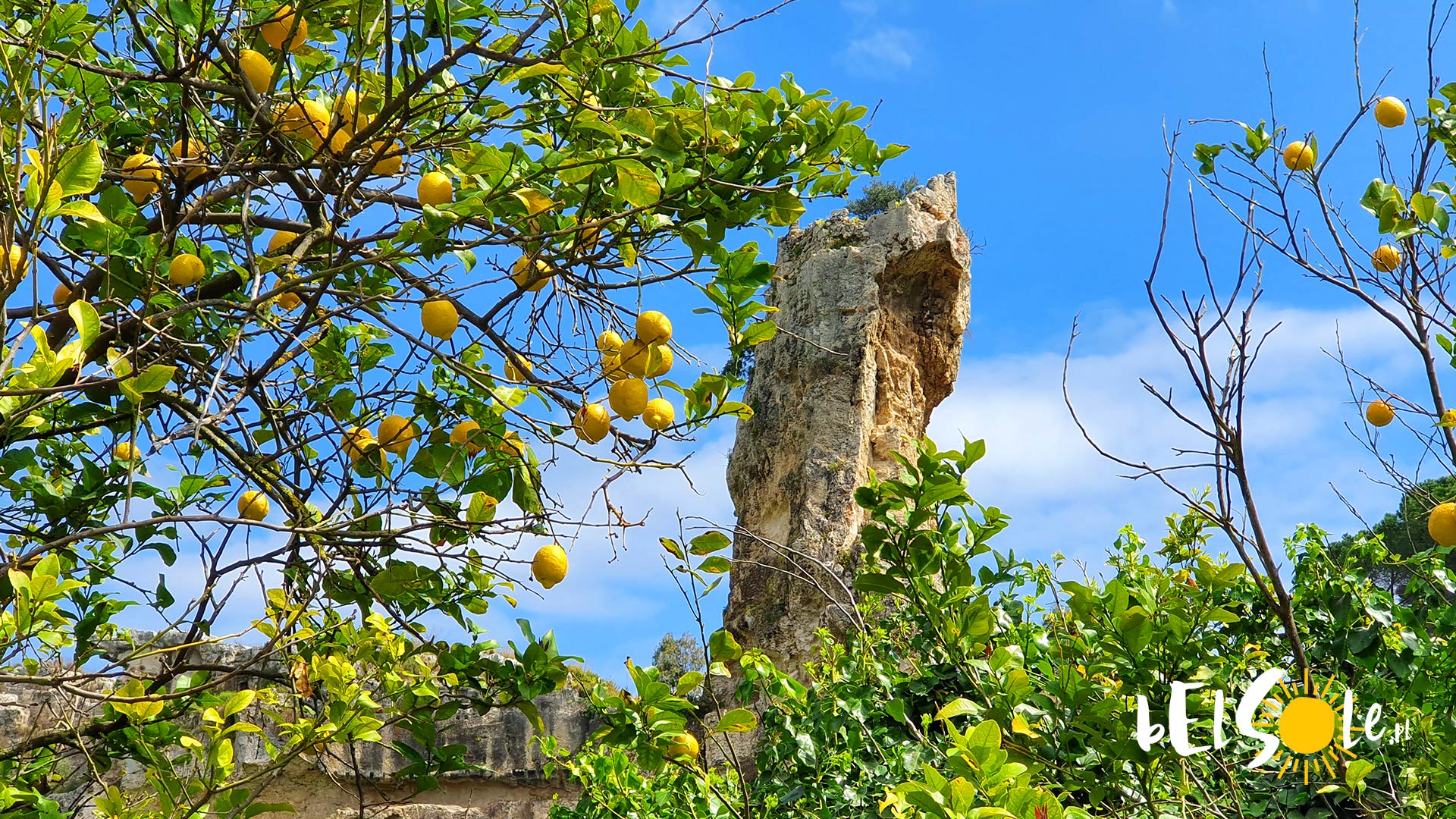
Located in the Neapolis area. If you’re looking for some days off, to hide from the constant Sicilian heat, we recommend taking a stroll down the canyons in the Park – here, you’ll find many romantic passages and an enormous amount of citrus trees and magnolias. Additionally, there are numerous tombs carved into the rock walls of the canyon.
Map of attractions on Syracuse:
- Main station
- Neapolis – entrance
- The Roman Amphitheatre
- The Latomia del Paradiso gardens and the Ear of Dionysius
- The Greek Theatre
- The Shrine of Hieronymus II of Athens
- The Archaeological Museum in Syracuse
- The Syracuse Basilic
- Entrance to Ortigia and the Archimedes’ statue
- The temple of Apollo
- The fountain of Diana and the Archimede Square
- The Syracuse Cathedral and the Temple of Athena
- The Maniace Castle
- Syracuse boulevards
